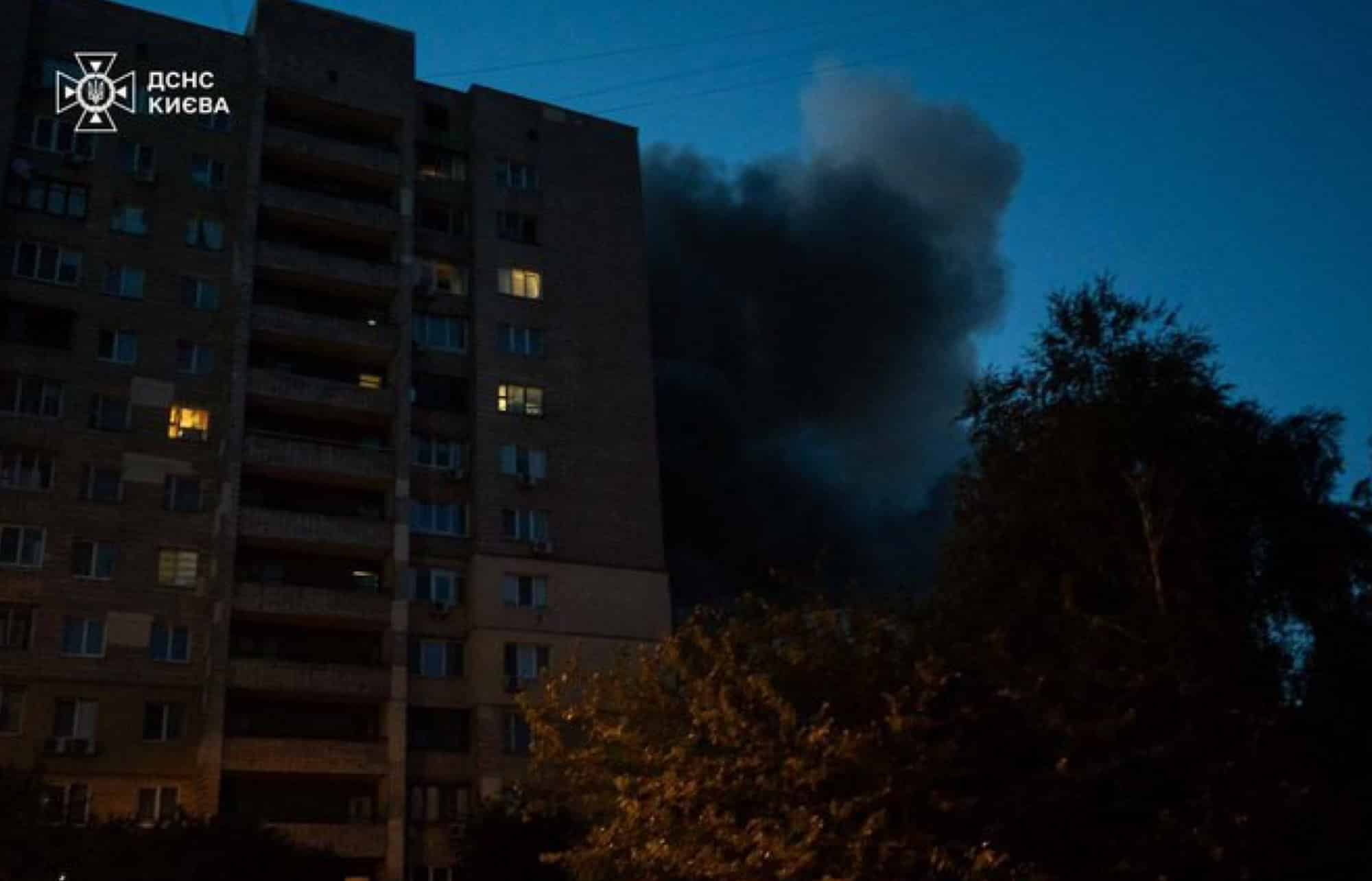Russia’s Record Drone Attack on Kyiv: Insights into Modern Warfare
On July 4, 2025, Russia carried out an unprecedented drone attack on Kyiv, deploying 539 unmanned aerial vehicles, including the notorious Iranian-designed Shahed models, now manufactured in Russia. This massive operation not only broke records for drone assaults on the Ukrainian capital but also highlighted the changing dynamics of drone warfare and the strategic potential of the Shahed “kamikaze” drones.
Shahed Drones: Revolutionizing the Battlefield
Understanding the Shahed Drone
The Shahed 136, a well-known entity in military spheres, is a long-range, cost-effective loitering munition, commonly referred to as a “kamikaze” drone. Initially developed in Iran, it is now produced in Russia and other nations. Its design emphasizes practicality with simplicity and economic production.
Key Specifications:
- Wingspan: 2.5 meters
- Length: 3.5 meters
- Weight: ~200 kg
- Warhead: 30–50 kg
- Range: 1,000–2,500 km (some variants up to 4,000 km)
- Engine: Rear-mounted piston engine with “pusher” propeller
- Cost: Approximately $20,000 each
- Guidance: Inertial navigation with basic GPS correction
- Launch Method: Truck-based rails or pods for rapid deployment
Tactical Traits:
- Launched in large groups to overwhelm defenses
- Low and slow flight for stealth
- Single-use missions to attack targets
The July 4 Attack: Anatomy of a Swarm
This historical strike used 539 drones, significantly more than previous attacks, with a majority being Shahed variants, showcasing their pivotal role in Russian strategy.
Objectives:
- Saturate defenses: Forces the use of costly interceptors against inexpensive drones.
- Psychological impact: The distinctive buzzing causes dread among civilians.
- Target infrastructure: Coordinated hits disrupt essential facilities.
Ukraine reportedly shot down 89% of these drones using various defense systems, highlighting the attack’s pressure on resources, given delays in foreign air defense shipments.
Global Production and China’s Role
A noteworthy discovery from a downed Shahed was a Chinese-made component, underlining the global nature of drone manufacturing which poses challenges for controlling drone proliferation.
Effectiveness of Shahed Drones
1. Swarm and Overwhelm
The Shahed’s power lies in volume, with truck-mounted launchers releasing numerous drones instantly, maximizing defense saturation.
2. Low-Cost, Modular Design
Basic components keep production costs low, allowing expansive use and making detection difficult.
3. Versatility in Range and Payload
With ranges up to 2,500 km, they cover vast areas, equipped with adjustable payload options.
Comparing Shahed and Conventional Drones
| Feature | Shahed 136 | Traditional Cruise Missile | High-End Combat Drone (e.g., MQ-9) |
|---|---|---|---|
| Cost | ~$20,000 | $1–3 million+ | $15–30 million+ |
| Guidance | Inertial + GPS | Precision GPS/INS + imaging | Advanced optics, real-time links |
| Reusability | None | None | Multiple sorties |
| Payload | ~30–50 kg warhead | 200–500 kg+ | Missiles, bombs, surveillance |
| Launch Flexibility | Truck-mounted, anywhere | Fixed site or ship | Airbase or carrier |
| Swarm/Tactical Use | Yes | Rarely in mass | Rarely in mass |
Shaheds represent low-cost, effective warfare capable of straining high-tech defense systems.
Psychological Warfare
Residents in Kyiv recognize the ominous buzz signaling drone attacks, creating a widespread sense of fear and stress, while memes and humor mitigate the psychological toll.
Challenges with Air Defenses
Ukraine’s high Shahed interception rate reveals the cost imbalance in defense efforts, sustaining a war of attrition between inexpensive drones and costly interceptors.
Drone Development and the Global Arms Race
The drone revolution isn’t limited to Russia; nations worldwide are innovating scalable, cost-effective drone solutions, driving a global rethink on defense strategies.
Learning from the Conflict
For Civilians
- Reliance on tech for early warnings
- Humor as a coping mechanism
For Militaries
- Develop new defense mechanisms
- Address the economic challenges of defense
For Policymakers
- Strengthen supply chain controls
For Industry
- Counter-drone market expansion
Cultural Relevance
The Shahed drones have infiltrated pop culture through media portrayals and digital content, transforming the narrative of modern drone warfare.
Recognizing Kyiv’s Defenders
Volunteer units in Kyiv, part of “mobile fire teams,” have shown valor in combating drones, becoming emblematic of Ukraine’s resistance spirit.
Future of Drone Warfare
Look forward to advancing drone technology, enhancing swarm intelligence, integrating with other strike systems, and boosting countermeasure capabilities.
Key Lessons
- The massive drone assault on July 4 underscores a turning point in conflict dynamics, where affordability and volume rival traditional power.
- Shahed drones redefine inexpensive drones’ roles in warfare, challenging the most advanced defenses and reshaping global security perceptions.
- Their psychological and economic impacts are significant, influencing everything from civilian lifestyle to defense spending.
- Until effective countermeasures emerge, such drone tactics will proliferate.
In a haunting reminder, one Kyiv resident reflects, “The true mark of modern drone warfare is its ability to instill fear, without needing to make a visual impact.”













